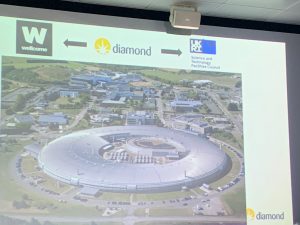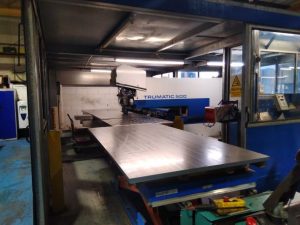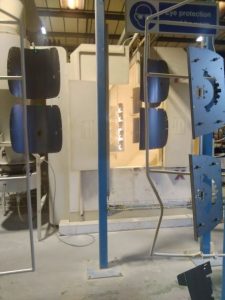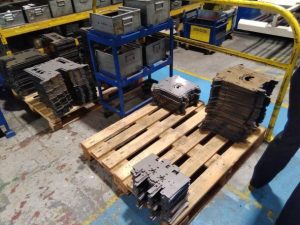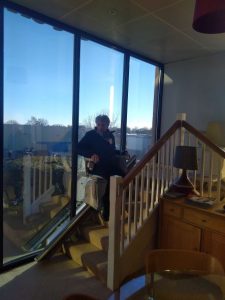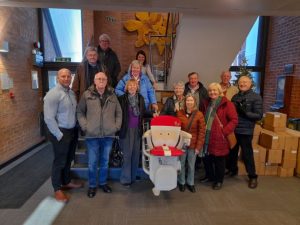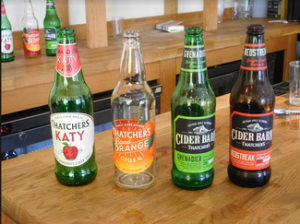Our party was greeted by Amy who manages all visits amongst many other functions, and we were first directed to their relatively luxurious canteen for a reviving cup. The 2-hour guided tour commenced with a short history and function of the synchrotron, and we realised just how fortunate we were to be able to secure the only general visit available this year to Diamond Light at Harwell which is the UK’s national Synchrotron science facility.
Under the huge doughnut shaped roof electrons are accelerated to near the speed of light, emitting a stream of light which is many million times brighter than the sun. The electrons are directed into what they call ‘beam lines’ and are then used to conduct at sub-atomic level experiments/investigations into various engineering, medical, metallurgical, chemical, biological, veterinary, archaeological, etc problems.
Because it is a ‘not for profit’ organisation, much of the work is basic research in co-operation with universities around the world (but very often Oxford) which must be published so that mankind may benefit from the discoveries made. It is the UK’s contribution to a genuinely international enterprise, and it was no surprise to learn that the 740+ staff were recruited from 43 different nationalities.
Some 10% of their work is confidential and conducted for commercial companies who retain the information and we saw a portion of a very large hollow fan blade as used in the latest engines by Rolls-Royce. Apparently, the company wished to know how the outer surface of the blade reacted to certain load conditions. This information was provided after an investigation by Diamond Light.
At each of the 33 beam lines located at tangents around the outer periphery of the of the beam accelerator we saw descriptions of the research project being undertaken. Of particular interest was the continuing investigations into Cov2 type viruses with the ultimate intention to try to develop a new vaccine which will be effective against all future mutations. This same technology could also be used to combat the influenza virus which mutates every year and currently requires annual immunisation. We noted several other beam lines were conducting other investigations into such diseases as Parkinson’s and cancer.
Several advance technology companies have offices close to Diamond Light (as shown in the attached photo) and they, presumably, utilise their facilities on a regular basis. The present accelerator is now some 20 years old and must be replaced. Components are currently being manufactured and the accelerator will be closed for about a year in the autumn whilst the new one is being constructed. The intention being to maintain our leading role at the cutting edge of a number of scientific disciplines.
This proved to be one of the most interesting visits organised for the Questers group and the necessarily limited number of attendees found all aspects to be fascinating. Our thanks, as usual to Robert our mini-bus driver for safe delivery and return.
Norma Bryan
